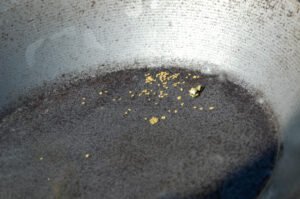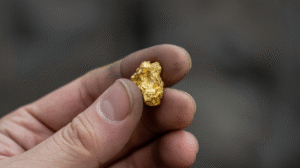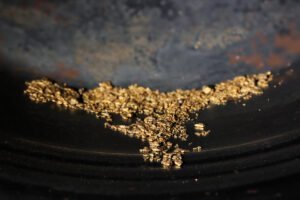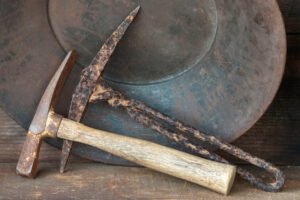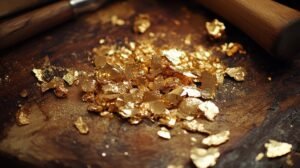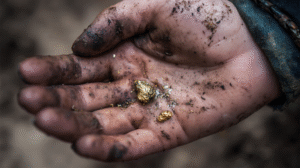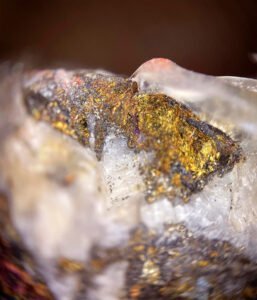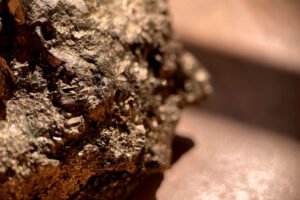
Gold, the precious metal that has captivated human imagination for millennia, comes in various forms and types, each with its unique characteristics and properties.
Understanding the different types of gold is essential for both collectors and those involved in gold-related industries.
Understanding the Different Types of Gold
In this comprehensive guide, we will explore the various types of gold, from its natural states to its diverse applications.
1. Native Gold
– What is Native Gold?
- Native gold is the purest form of gold found in nature, occurring as nuggets, flakes, or fine grains.
- It is nearly 100% pure and does not require any refining processes.
– Occurrence:
- Native gold is typically found in quartz veins or alluvial deposits, often associated with other minerals like quartz, pyrite, or silver.
– Collectibility:
- Native gold nuggets are highly sought after by collectors and are considered prized specimens.
2. Electrum
– What is Electrum?
- Electrum is a naturally occurring alloy of gold and silver.
- It can vary in composition, with gold content ranging from 20% to 80%.
– Historical Significance:
- Electrum was historically used for coinage in ancient civilizations like Lydia and Greece.
3. Gold Alloys
– What are Gold Alloys?
- Gold alloys are mixtures of gold with other metals, such as copper, silver, or palladium.
- These alloys are created to enhance the durability, color, or workability of gold.
– Common Alloys:
- 18K Gold: Contains 75% gold and is often used for high-quality jewelry.
- 14K Gold: Contains 58.3% gold and is a popular choice for both jewelry and dental applications.
- White Gold: An alloy of gold, nickel, and palladium, known for its silvery appearance.
- Rose Gold: Combines gold with copper, giving it a warm pinkish hue.
4. Gold Bullion
– What is Gold Bullion?
- Gold bullion refers to gold bars or coins that are produced with a high level of purity, typically ranging from 99.5% to 99.99%.
- It is often used for investment and wealth preservation purposes.
– Notable Examples:
- The American Gold Eagle, South African Krugerrand, and Canadian Maple Leaf are popular gold bullion coins.
5. Gold Leaf
– What is Gold Leaf?
- Gold leaf is gold that has been hammered into extremely thin sheets, often just a few micrometers thick.
- It is used for gilding and decorative purposes in art and architecture.
– Application:
- Gold leaf is applied to surfaces with adhesive and can create stunning, shimmering effects.
6. Industrial Gold
– What is Industrial Gold?
- Industrial gold refers to gold used in various industrial applications, including electronics and dentistry.
- It is often alloyed with other metals to enhance its properties.
– Dental Gold:
- Gold is used in dentistry for crowns, bridges, and other dental work due to its biocompatibility and durability.
7. Gold Compounds
– What are Gold Compounds?
- Gold compounds are chemical compounds that include gold ions.
- They have medical applications, including the treatment of rheumatoid arthritis and certain forms of cancer.
Conclusion
Gold’s versatility and allure extend beyond its pure form, encompassing a wide range of types and applications.
Whether you’re interested in collecting native gold nuggets, investing in gold bullion, or exploring the applications of gold alloys, understanding the various types of gold allows you to appreciate the metal’s richness and significance in different aspects of human life and culture.
Pins for Pinterest
If you like what you see, feel free to share some love on Pinterest ❤️

Subscribe to Our Newsletter

